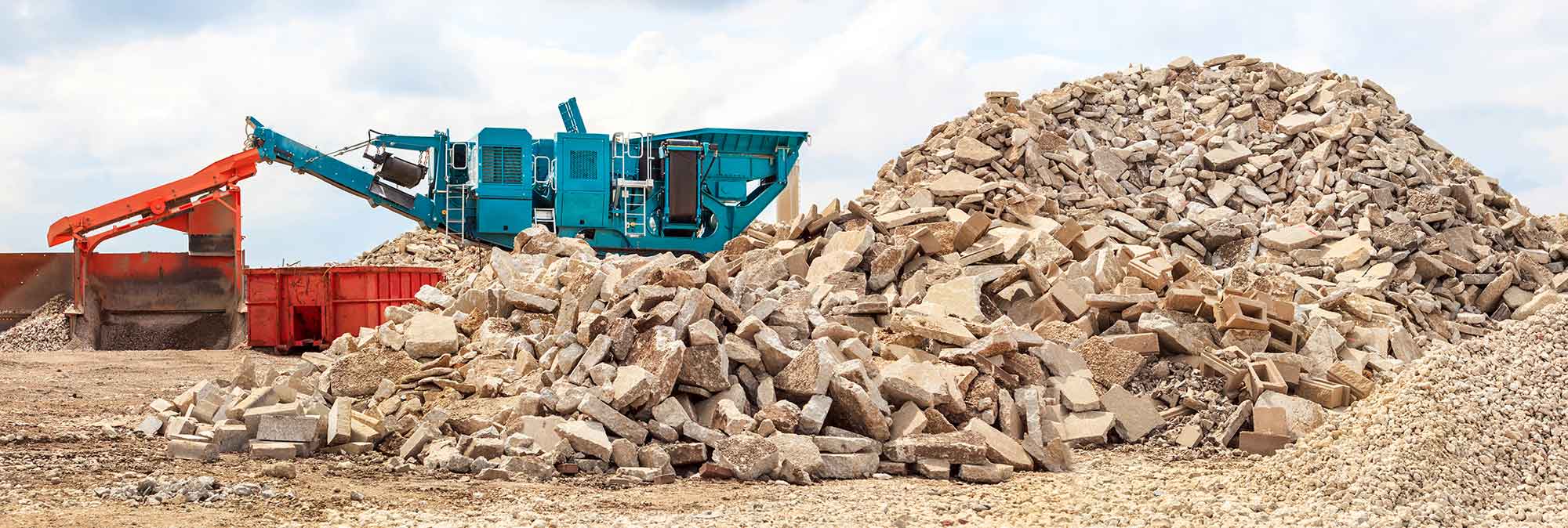Around half of the total resource consumption in Austria, 95 Mt per year, is accounted for by the use of non-metallic minerals and the raw materials used in the construction industry.1 These building materials will continue to be used significantly in building construction and infrastructure construction in the future. In addition, it is to be expected that large quantities of construction waste will accumulate in the coming years due to the comprehensive renovation of the building stock. The necessary reduction of resource consumption and CO2 emissions poses great challenges for the building materials industry. Decarbonisation and the transformation to a circular economy will require innovations along the entire value chain of the solid construction industry. In a recent study by the ÖGUT – Austrian Society for Environment and Technology2, the requirements, opportunities and potentials of a ”circular economy” for the solid construction industry were analysed and future fields of action for research and development were identified.
Some core results of the analysis
>The recycling rate in the Austrian construction sector is already high at around 80% and primarily concerns asphalt and waste from underground construction projects. For the most part, the materials are downcycled. The residual masses are mainly used for road construction or as backfill material and are usually not recycled to a higher value. In building engineering, the recycling rate is only about 40%. In order to be able to use residual materials as a basis for high-quality, pollution-free recycling (recyclable) building materials, it is necessary to separate and process them by type. However, the increase in composite materials is making it more difficult to deconstruct building construction in this way.
>At this time, it is not economically viable to recycle solid construction materials. The low cost of primary raw materials and depositing the waste is offset by the high cost of transport and separating and processing the residual materials. Logistics and matching the time and place of the supply and demand are key factors influencing the economic viability of recyclable building materials.
>The sorting and processing of construction waste sometimes require a high energy input. It is also necessary to consider how environmentally-friendly the recycling processes are.
>One important aspect is the accumulation of pollutants in products and materials. Through consistent recycling over several building life cycles, pollutants can accumulate beyond the currently applicable limit values, and currently harmless components can become problematic substances in the future.
>Building information modelling (BIM) should be used to build and update material databases and overviews of the masses in all life cycle phases of a building structure and could support the use of regionally available residual materials from the construction industry.
>Involving all stakeholders along the entire value chain is one important prerequisite to increasing the recycling of materials used in solid construction. So far, there is little networking between the construction industry, the waste industry and the raw materials industry (including producers of building materials).
>The legal framework conditions (e.g. standardisation, waste legislation and the guarantee of recyclable building materials) will be decisive in making the recycling of materials in solid construction economically viable. The current construction regulations are rather restrictive, especially for the use of recyclable concrete. Legal restrictions also affect, among other things, the use of mobile treatment plants in urban areas.

Required research and recommendations for action
In the course of the study, the required research and possible strategies for increasing the recycling of materials in solid construction were analysed and divided into three fields of action. For a transformation towards a circular economy, it will be necessary to develop new technological approaches, process innovations and new business models. The close networking of stakeholders along the entire process chain as well as the legal and normative framework conditions are of central importance. In its study, ÖGUT, the Austrian Society for Environment and Technology, has compiled detailed research topics in all these fields of action to promote the recycling of materials used in solid construction.
1 Federal Ministry for Climate Protection, Environment, Energy, Mobility, Innovation and Technology (BMK): Resource Use in Austria 2020 – Volume 3. Vienna, August 2020.
2 Anforderungen an die Kreislauffähigkeit von Massivbaustoffen (Requirements for the recyclability of materials used in solid construction), a study commissioned by the Federal Ministry for Climate Action, Environment, Energy, Mobility, Innovation and Technology (BMK), ÖGUT – Austrian Society for Environment and Technology, F. Trebut, B. Pfefferer, June 2021.


